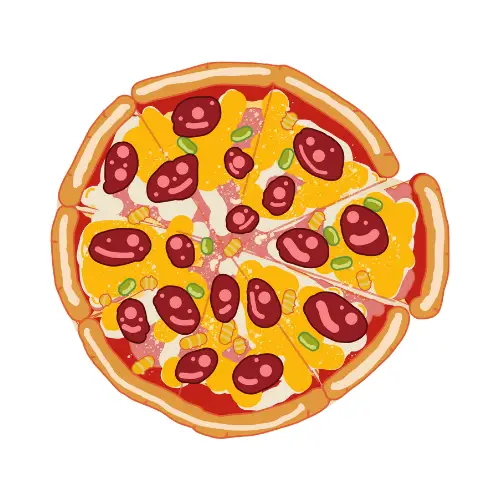It happens that sticky pizza dough spoils all the fun of culinary creation, doesn’t it? What are the reasons for this and how can you fix sticky dough? Let’s dig into it!
I once baked a pizza using a tried-and-true recipe but suddenly something went wrong. The consistency of my dough was quite different from what I was used to. It was sticky and uncomfortable to work with, even though I did everything as usual. Here I realized that I had something to explore. Hey Google, what’s wrong with my dough?
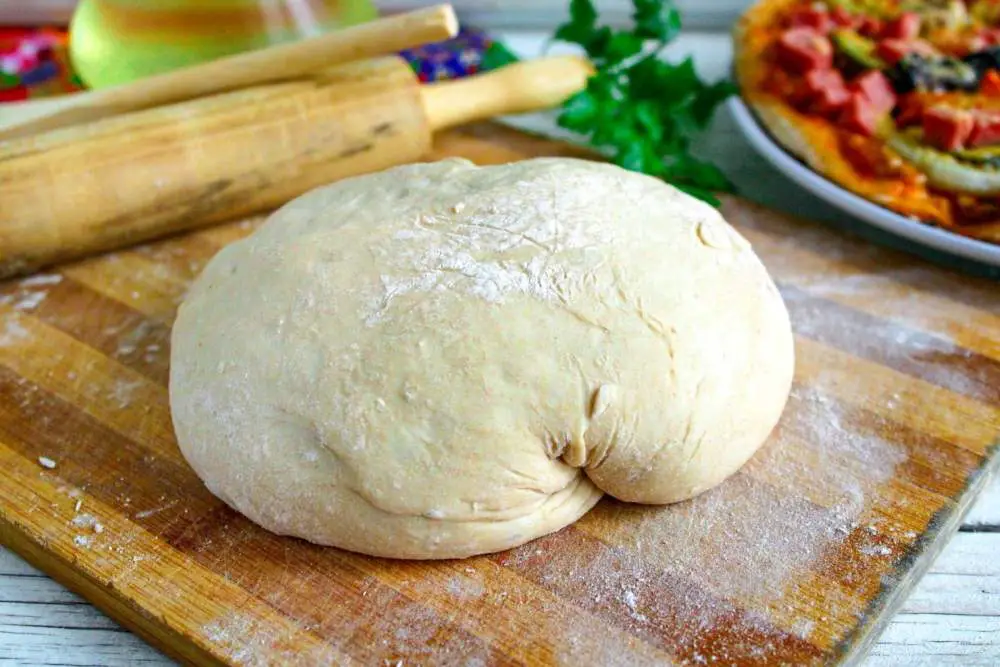
Why Dough May Be Sticky
First, I checked everything where I could have made a mistake with the ingredients. I suspected I had put the flour and water wrong.
Too much water is #1 reason of sticky pizza dough
The most expected reason why the dough is too sticky is excess water, or to say otherwise, too much hydration.
Dough hydration is the proportional ratio of the weight of water to the weight of flour. For example, if you take 700g of water and 1000g of flour, the hydration will be 70%.
700g/1000g * 100% = 70%
You can also count in the reverse direction. If you plan to use 500g of flour for 66% hydration dough, the water calculation would be:
water ? / 500g x 100% = 66%
water = 500g * 66 : 100 = 330g
For more information about baking math, visit Pizza Dough Hydration In Simple Words.
A lower hydration level will make the pizza dough dry and stale. A higher hydration percentage will make the dough sticky and liquid. The optimal level of hydration is about 65%, although there are pizza dough recipes with both lower and higher levels. This is determined by the crust you want.
In my situation, I was expecting 65% hydration for a thin crust, and I know for a fact that I measured the water correctly.

Wrong flour is #2 reason of sticky dough
Flour is made from different grains, so always watch what type is listed in the recipe. Usually it’s all-purpose flour, but it’s always worth checking.
But even within regular wheat flour there can be a difference. It’s a matter of gluten content. A higher level of gluten means stronger flour which is good for baking with high dough hydration. Unfortunately, not all manufacturers specify its strength in the nutrients, so pay attention to the protein amount.
There is a flour strength chart, and each type has its best use. The strength is measured in W units. The higher W, the greater the gluten protein and the stronger the flour.
Lack of flour makes the dough watery and not elastic, and too much flour makes it dense and solid. Keep in mind, sifted and airy flour interacts better with water.
Gluten-free dough requires special attention, it is worth talking about in a dedicated article.
As for me, I always buy flour from the same brand and that time I measured from an already opened package.
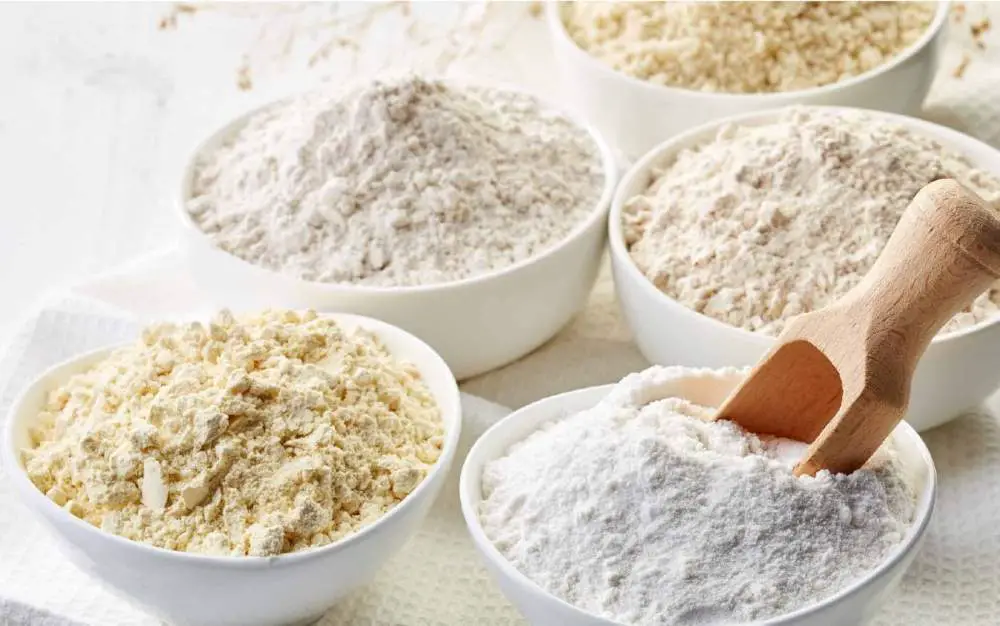
Wrong measurement is #3 reason of steaky pizza dough
And without straying too far from the flour and hydration combination, I will warn you about units of measurement. To calculate hydration, you should use units of weight, i.e., grams, not units of volume, i.e., cups.
I use the same measuring cup with 250 ml standard volume and know that it holds 250g of water and 150g of flour.
It would be a mistake to suppose that one cup of water and two cups of flour would make 50% hydration. In fact, it will be an 83% hydration:
250g / 300g * 100% = 83%.
This ratio requires taking only the strongest flour with the highest gluten content.
It helps that we tend to underfill a cup of water and overfill cups of powder because ones are lazy to even out the hill.
#4 Not enough kneading can result in too sticky pizza dough
Kneading the dough means more than just getting the ingredients into a homogeneous state. When you knead the dough, gluten development is occurring. And the more intense your kneading process, the more protein strands you will develop.
Too little kneading will leave your pizza dough sticky. There is a special dough mixer that can get it done in 10 minutes, but with me, it takes about 20 or even 30 minutes by hand. It’s pretty tedious, so I’m considering buying one.
Repetitive stretching motions create protein chains and develop gluten. The longer you knead, the less sticky dough becomes. So be brave and keep kneading!

Wrong timing causes stickier dough: the 5th reason
The dough should definitely rise enough, its volume should double at least. This is necessary for yeast to work for gluten development.
Yeast needs time to develop gluten bonding. In chemistry, this process is called maturation time. And the stronger the flour, the longer the dough’s maturation time will be. The maturation time for all-purpose flour is up to three hours, for the strongest one it can be up to 24 hours.
To prevent stickiness, I give pizza dough extra time to rise if I see that doubling in volume is not yet complete. Making pizza dough doesn’t tolerate fuss, but if you use a pizza recipe with a pre-made starter, you can save time.
For more information on dough rising and its processes, see our article How long should pizza dough rise? Professionals answer.
Using cold water is the 6th point
Kneading with cold water makes pizza dough sticky. For yeast dough, it is better to use warm water. For a quick dough, try Poolish Pizza Dough.
Cold water can slow down the gluten develop process, and hot water can kill the yeast. The optimal temperature would be about 100 degrees Fahrenheit.
I don’t usually use a thermometer. I mix room temperature water and boiling water so that my hands feel comfortable holding the cup with warm water.
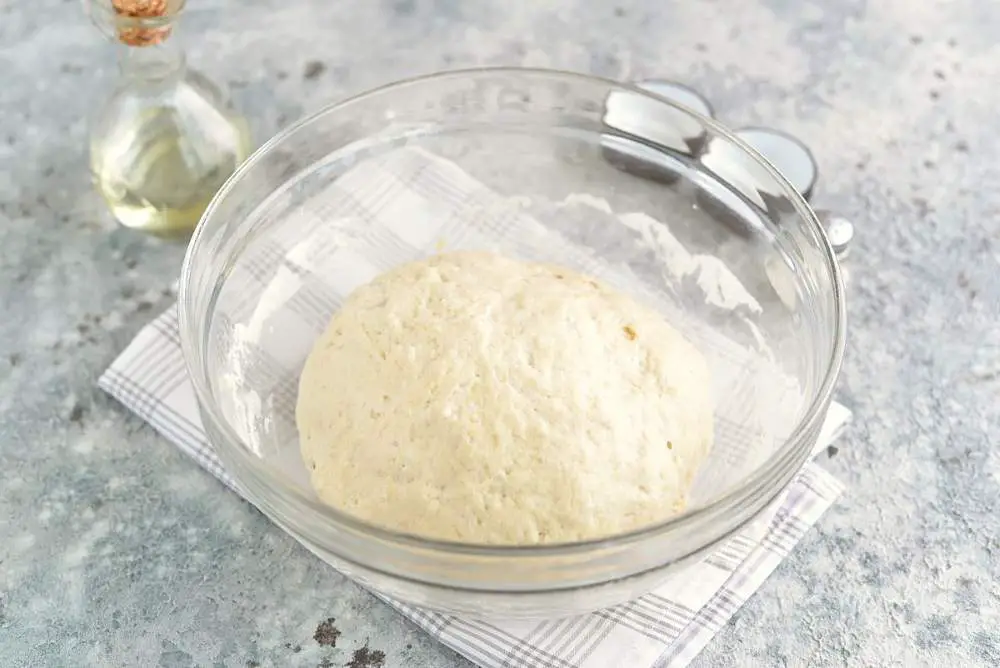
#7 Influence of environment
Turns out that the humid environment was the very reason I got sticky pizza dough.
Found that humid conditions greatly affect the ability of flour to absorb water. If the meal is stored in a dry condition, it absorbs water well and the dough is elastic. If the humidity was high, it reacts poorly with water and the dough can come out sticky.
Just before making pizza dough, I was cooking pizza sauce, and took a long time to evaporate the excess liquid. It was warm and humid in the kitchen. Apparently, this had a bad effect on the flour. From now on, I will store it in an airtight container to avoid it getting wet.
In addition to my mistakes, I also wanted to air out the kitchen. Excessive ventilation is also bad for the dough, so it is usually covered with plastic wrap or a towel. Now I know my mistakes and understand why my pizza dough is sticky.
Don’t repeat my missteps and let’s see how to fix sticky pizza dough.
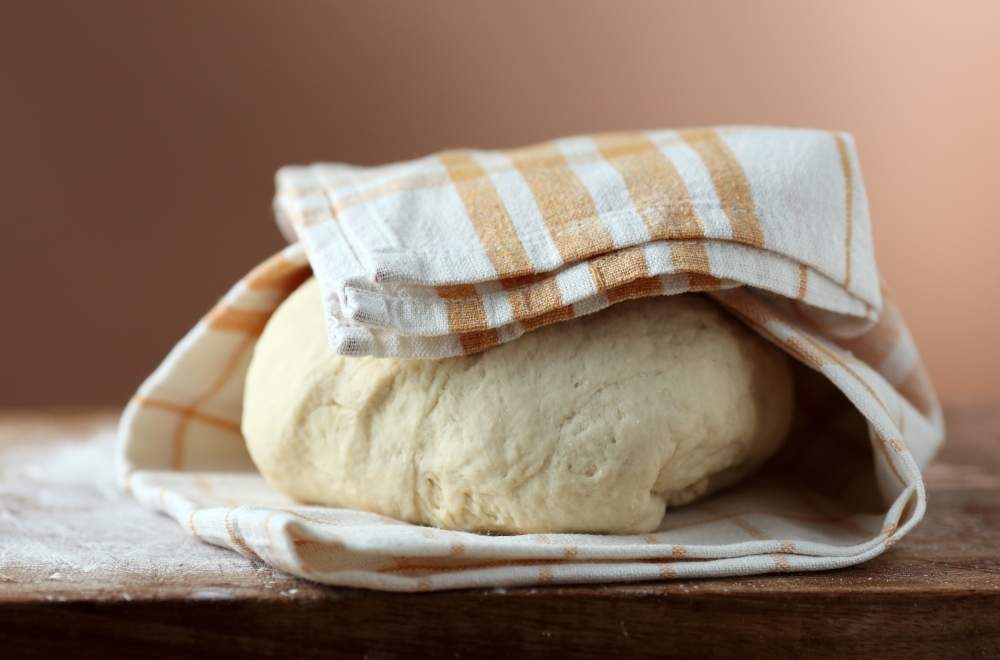
How to Deal with Sticky Dough
Well, I got my pizza dough too sticky. Adding flour and kneading would fix my dough. Hope, it helps you too.
First and foremost, begin a thorough kneading process. Continue this for five minutes and see if there is any difference. If the stickiness has decreased, you are on the right track. If it stays the same, add a spoonful of extra flour. Knead again for five minutes and again assess the result.
Add flour slowly in small doses so as not to make the dough too stiff. After a few spoonfuls, let the dough rest and have a rest for yourself! The second time the dough rises quite quickly.

Is it necessary to fix sticky dough
While I was kneading, I got an idea. Is sticky pizza dough so bad?
Some recipes specifically achieve high hydration to get a light crispy pizza crust. With a moister dough, you can use higher baking temperature in the oven and shorten the cooking time. That will keep the filling from drying out.
How to Prevent Pizza Dough Sticking
If the dough satisfies you and you’re ready to move on, here are a few of my practices on how to make life easier.
To keep the dough from sticking to your work surface, dust it with a thin layer of flour.
To prevent pizza dough from sticking to your hands, you can moisten your hands with water or olive oil. A little oil can be added to the dough.
Use a dough scraper to remove pizza dough that has already stuck to the table. Also, a dough scraper can be used to rake any remaining dough out of the bowl. A dough scraper can also help you to form a pizza circle.
To prevent pizza dough sticking to your pizza peel, dust it with flour or semolina. Semolina has a coarser texture, so it is more resistant to burning. The semolina grains will work like wheels and your pizza will slide off the pizza peel onto the pizza stone.
You don’t have to worry that semolina will change the taste of the dough, since semolina is made from wheat, just like flour. Here is an interesting video from The Grain Chain with more details.
If your pizza stone is seasoned enough, there is no need to sprinkle it with semolina. The water will evaporate from the dough during the cooking process and no stickiness will remain. Just in case, let me remind you that the pizza stone must be preheated.
If you are using a steel sheet, you can grease it with a little oil and place the pizza right on it. This will allow you to do away with the pizza peel and reduce the risk of pizza sticking.
FAQ
What if pizza dough is too sticky?
Don’t worry, this is fixable, use a little more flour and knead the pizza dough well. Too little kneading won’t create enough gluten protein bonds.
Should pizza dough be sticky or dry?
The pizza dough should not be sticky or dry. It should be elastic and hold its shape well.
Should pizza dough be wet and sticky?
No, too much water can make the dough wet and sticky. Try to knead it again and add flour in small doses. This will help to make the dough pleasant to work with.
What does it mean when dough is sticky?
It means that there is too much water in the dough, or the flour has bonded with less water than expected. Enough gluten will be formed if you add some flour and knead the dough again.
Final Thoughts
If something goes wrong and the pizza dough turns sticky, wait to get frustrated. Determine which of the seven reasons prevented you from making perfect pizza dough and make sure it can’t happen again.

Generally speaking, these reasons boil down to an imbalance of water and flour. Even if you measure everything clearly, there are environmental factors that significantly affect the result.
Anyway, you should improve the balance by adding flour little by little and knead the dough again and again. Perhaps your pizza dough just needs a little time.
Wish my little tips would give your sticky pizza dough a second chance!
